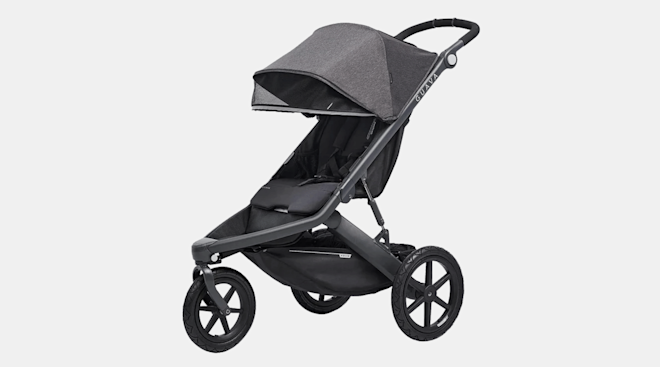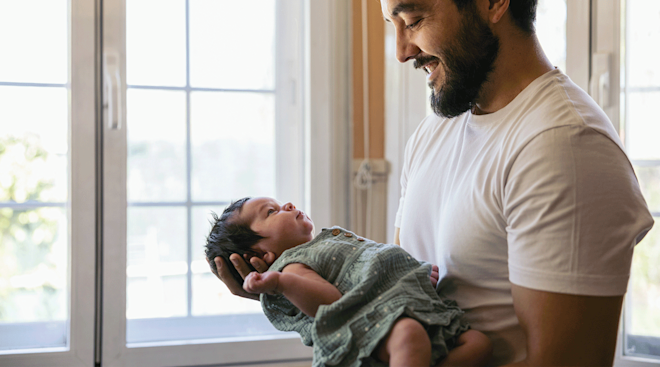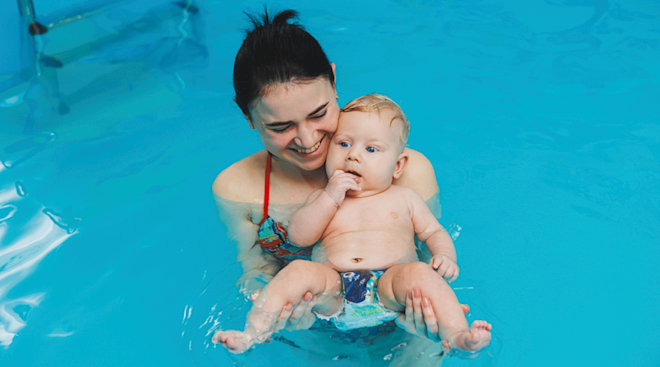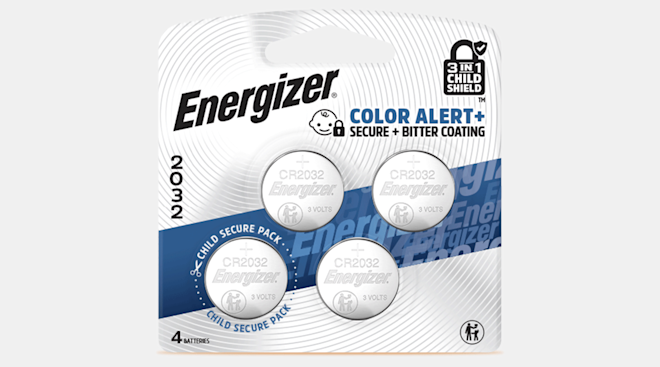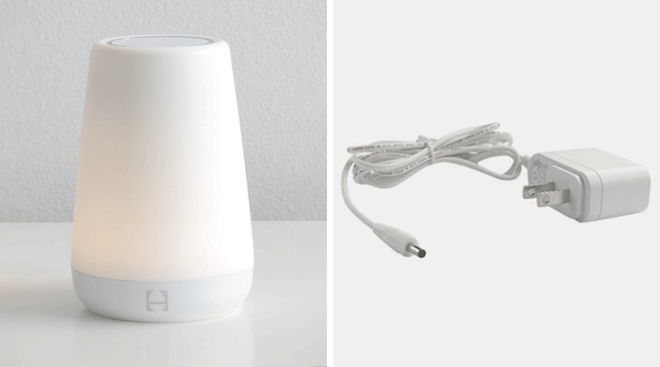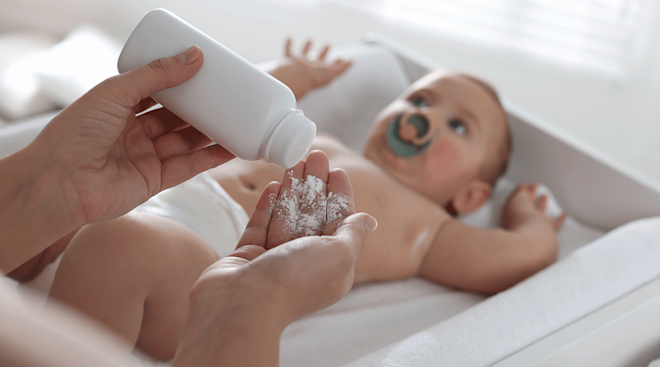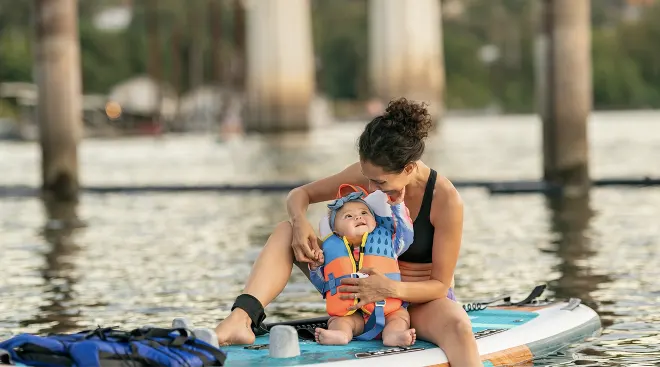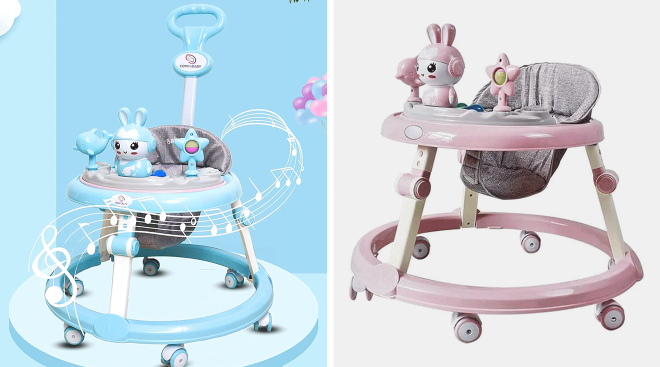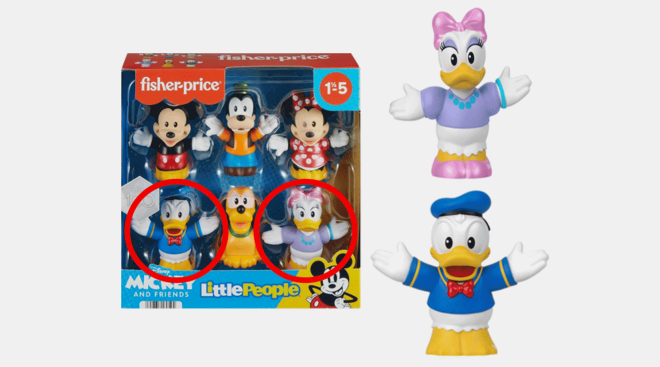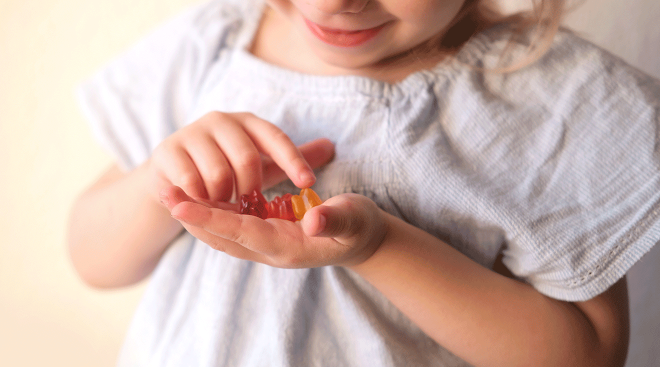The Truth About the Safety of Crib Bumpers
As a new parent, your spidey sense is in overdrive, watchful for anything that could possibly harm your little one. You’ve done an A+ job baby-proofing your home already, but perhaps there are some aspects of baby’s nursery that still have you worried—namely, baby’s crib. As a protective parent, those hard wooden crib slats can seem suspect. What if baby hits their head or gets a limb stuck through one of the slats? You might be tempted to turn to crib bumper pads as a solution—but are crib bumpers safe? The short answer: No. They’re actually unlawful.
Read our guide below for the lowdown on baby crib bumpers, from what they are and the history behind them to whether they’re appropriate for baby. Keep reading to find out what experts say about crib bumper safety and what alternatives you may want to use instead.
A baby crib bumper, or a crib liner, is a fabric pad that’s designed to surround the interior sides of a crib to prevent baby from accidentally slipping their limbs through the slats or banging their head on the side of the crib. To keep their little ones safe, some parents used to turn to baby crib bumpers, which were thought to provide a protective bubble for baby when in the crib. But while they’re meant to protect baby, studies show they can actually have the opposite effect.
It’s not always fear of injury that prompts parents to buy crib bumper pads. Crib bumpers were marketed as stylish additions to a nursery. In fact, in past years baby crib bumpers were often sold in a set with baby bedding to complete the look of baby’s room.
While certain retailers have promoted crib bumper pads as the perfect complement to your nursery design, the American Academy of Pediatrics (AAP) and the US Consumer Product Safety Commission (CPSC) do not agree. Thanks to the advocacy efforts of both organizations, the Safe Sleep for Babies Act was signed into law in May 2022. It bans the manufacture, sale and distribution of crib bumpers and inclined sleepers for infants.
Experts have been warning of the risks of crib bumpers for quite some time. In fact, a 2007 study published in the Journal of Pediatrics concluded that crib bumpers are unsafe because they can suffocate or strangle an infant. Read on to learn more about the dangers associated with crib bumper pads and why it’s best to avoid them.
It’s still a common question: Are crib bumpers safe? The answer is a big, resounding no, and the passage of the Safe Sleep act—which bans the sale of crib bumpers—solidifies concerns experts have been voicing for decades. The AAP doesn’t recommend crib bumpers because of the concern of sleep-related deaths, explains Blair Hammond, MD, assistant professor of pediatrics at Mount Sinai Hospital in New York City. The concern is that an infant could suffocate if their nose and mouth get trapped under or against the pad—and the danger is real. A 2020 study from the AAP found that unsafe bedding was linked to 72 percent of all sudden unexpected infant deaths (SUIDs).
Statistics show baby crib bumpers in particular can pose serious—sometimes fatal—risks for infants. Data from the CPSC shows that between 1990 and 2019, 113 babies died in incidents where a crib bumper was used in the crib. Between 2008 and 2019, another 113 babies were injured or involved in bumper-related concerns.
Feel as if you need bumpers to protect baby’s head from getting bumped or caught in the crib slats? You really don’t. Since 1973, federal regulations have required crib slats to be narrow enough to prevent baby’s head from poking through—no more than 2 and ⅜ inches apart, about the width of a soda can. (The CPSC reaffirmed this requirement in 2011 when it issued the most recent round of updates to the crib safety standards, which all cribs sold in the US must meet).
Even with the use of crib bumper pads, baby can still hit their head: A 2015 study found that infants hitting their head and getting their limbs trapped in the crib slats still happened when bumpers were used in the crib.
Plus, at the end of the day, the risks associated with baby bumping their head aren’t nearly as high as the risks of suffocation and strangulation. “It’s very rare for contact between an infant and the sides of the crib to cause long-term injury,” says Alexis Phillips-Walker, DO, a pediatrician at Memorial Hermann Medical Group Pediatrics Atascocita in Atascocita, Texas. “Injuries like these are very mild, if they occur at all. Limb entrapments are also rare and cause minor injuries.”
The AAP and CPSC emphasize that the safest way for baby to sleep is in a crib with nothing but a tightly fitted sheet. “By banning the sale of dangerous and unsafe crib bumpers and inclined sleepers nationwide, this AAP-championed legislation is a true game changer when it comes to protecting infants from products that have no place in a safe sleep environment,” AAP president Moira Szilagyi, MD, PhD, FAAP, said in a 2022 statement on the passage of the Safe Sleep act.
Are mesh crib bumpers safe?
A lot of the previous discussion around whether crib bumpers were safe focused on fabric crib bumper pads, but there have been other types of bumpers on the market, including vertical bumpers, which are individual crib slat covers meant to prevent head bonks, and mesh crib liners, which are intended to keep flailing little arms and legs inside the crib.
Given that mesh crib liners would seem to have better airflow than crib bumper pads, and—as the CPSC points out—they’re thinner than traditional bumpers with little to no padding, it’s understandable that many parents wonder, are these kinds of crib bumpers safe?
Phillips-Walker says no. “Mesh crib covers and slat covers still pose a risk of strangulation and suffocation,” she explains.
In looking at CPSC data, 13 percent of the nonfatal incidents and concerns reported between 2008 and 2019 involved a breathable bumper or mesh liner. These incidents included “slat entrapments,” where a child’s arm or leg became trapped between the crib slats despite the presence of a mesh bumper.
The AAP echoes this sentiment, saying in a 2019 report, “more research is needed to verify the safety of supposedly ‘breathable’ crib liners, as the risks of suffocation may outweigh the minimal safety benefit.”
“Some crib bumpers are marketed as being safe, but for something to be promoted, there should be studies showing that they are safe, and currently there’s not enough data there to prove that crib bumpers are safe,” Hammond says.
The Safe Sleep act doesn’t ban unpadded and mesh crib liners. However, it’s better to be safe than sorry. Bottom line: The best way to keep baby safe in their crib is to follow the AAP’s safe sleep guidelines. Place baby to sleep on their back with nothing in the crib—that means no blankets, pillows, stuffed toys or crib bumpers—except a fitted sheet.
Are crib bumpers safe for older babies?
Crib bumper pads create a whole new set of problems for older babies and toddlers. “As kids get older, the concern is that crib bumpers could be used as a launching pad,” Hammond explains. “Babies might step on them to get up a little higher and get out of the crib, and end up falling and hurting themselves.”
So if baby crib bumpers aren’t safe, what are your alternatives? “I see why people like crib bumpers. I have kids, and when they were young they sometimes got their legs caught between the slats,” Hammond says. “But, unfortunately, there isn’t a great alternative to crib bumpers.”
Hammond does have one suggestion, though: a playard or portable crib (often used while traveling). Hammond says she used one herself for her third child. With bendable mesh sides, babies can’t put their feet through them or bonk their heads.
Sleep sacks are another safe alternative to prevent babies and toddlers from sticking their feet through the crib slats. These wearable blankets are like little sleeping bags that keep feet contained (but still free to kick throughout the night).
Sure, it’s possible that baby might bump their head now and again, or yes, try to stick their arms where they don’t belong, but don’t let that worry keep you up at night. “Given the low risk of injury in cribs, [a crib bumper] is unnecessary,” Phillips-Walker says. When it comes to baby crib bumpers, the dangers far outweigh any benefits.
About the experts:
Blair Hammond, MD, is an assistant professor of pediatrics at Mount Sinai Hospital in New York City and a practicing pediatrician at the Mount Sinai Doctors Faculty Practice. She is also the co-founding director and director of medical education for the Mount Sinai Parenting Center. Hammond completed her medical training at Dartmouth–Hitchcock Medical Center and her residency training in pediatrics at the Icahn School of Medicine at Mount Sinai.
Alexis Phillips-Walker DO, is a pediatrician at Memorial Hermann Medical Group Pediatrics Atascocita in Atascocita, Texas. She earned her medical degree from Ohio University Heritage College of Osteopathic Medicine and completed her residency at Authority Health/Michigan State University College of Osteopathic Medicine, where she trained at Children’s Hospital of Michigan in Detroit.
Please note: The Bump and the materials and information it contains are not intended to, and do not constitute, medical or other health advice or diagnosis and should not be used as such. You should always consult with a qualified physician or health professional about your specific circumstances.
Plus, more from The Bump:
Navigate forward to interact with the calendar and select a date. Press the question mark key to get the keyboard shortcuts for changing dates.


































